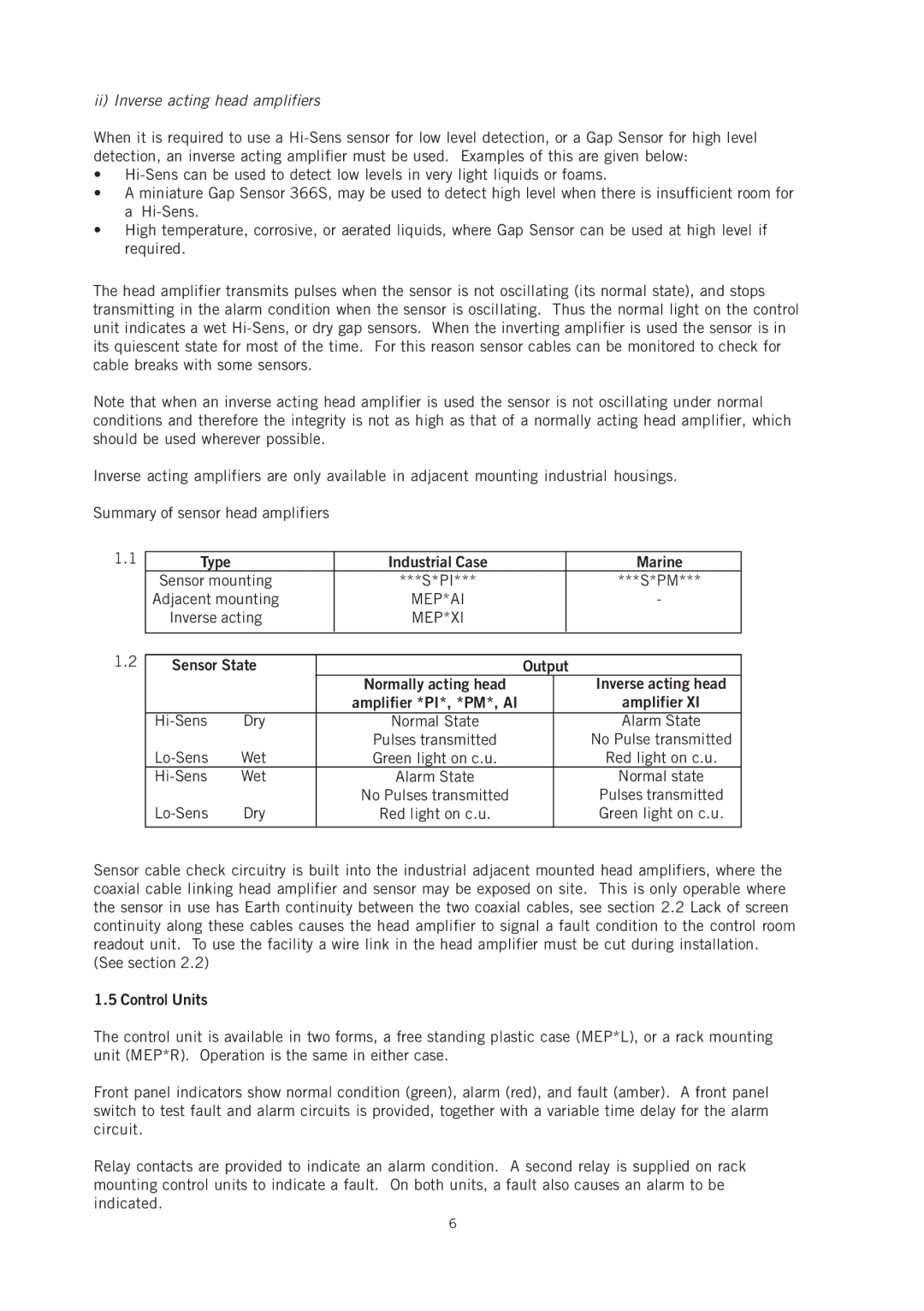ii) Inverse acting head amplifiers
When it is required to use a
•
•A miniature Gap Sensor 366S, may be used to detect high level when there is insufficient room for a
•High temperature, corrosive, or aerated liquids, where Gap Sensor can be used at high level if required.
The head amplifier transmits pulses when the sensor is not oscillating (its normal state), and stops transmitting in the alarm condition when the sensor is oscillating. Thus the normal light on the control unit indicates a wet
Note that when an inverse acting head amplifier is used the sensor is not oscillating under normal conditions and therefore the integrity is not as high as that of a normally acting head amplifier, which should be used wherever possible.
Inverse acting amplifiers are only available in adjacent mounting industrial housings.
Summary of sensor head amplifiers
1.1 | Type | Industrial Case | Marine |
| Sensor mounting | ***S*PI*** | ***S*PM*** |
| Adjacent mounting | MEP*AI | - |
| Inverse acting | MEP*XI |
|
|
|
|
|
1.2 | Sensor State |
| Output | |||
|
|
|
| Normally acting head |
| Inverse acting head |
|
|
|
| amplifier *PI*, *PM*, AI |
| amplifier XI |
| Dry | Normal State |
| Alarm State | ||
|
|
|
| Pulses transmitted |
| No Pulse transmitted |
| Wet | Green light on c.u. |
| Red light on c.u. | ||
| Wet | Alarm State |
| Normal state | ||
|
|
|
| No Pulses transmitted |
| Pulses transmitted |
| Dry | Red light on c.u. |
| Green light on c.u. | ||
|
|
|
|
|
|
|
Sensor cable check circuitry is built into the industrial adjacent mounted head amplifiers, where the coaxial cable linking head amplifier and sensor may be exposed on site. This is only operable where the sensor in use has Earth continuity between the two coaxial cables, see section 2.2 Lack of screen continuity along these cables causes the head amplifier to signal a fault condition to the control room readout unit. To use the facility a wire link in the head amplifier must be cut during installation.
(See section 2.2)
1.5 Control Units
The control unit is available in two forms, a free standing plastic case (MEP*L), or a rack mounting unit (MEP*R). Operation is the same in either case.
Front panel indicators show normal condition (green), alarm (red), and fault (amber). A front panel switch to test fault and alarm circuits is provided, together with a variable time delay for the alarm circuit.
Relay contacts are provided to indicate an alarm condition. A second relay is supplied on rack mounting control units to indicate a fault. On both units, a fault also causes an alarm to be indicated.
6
